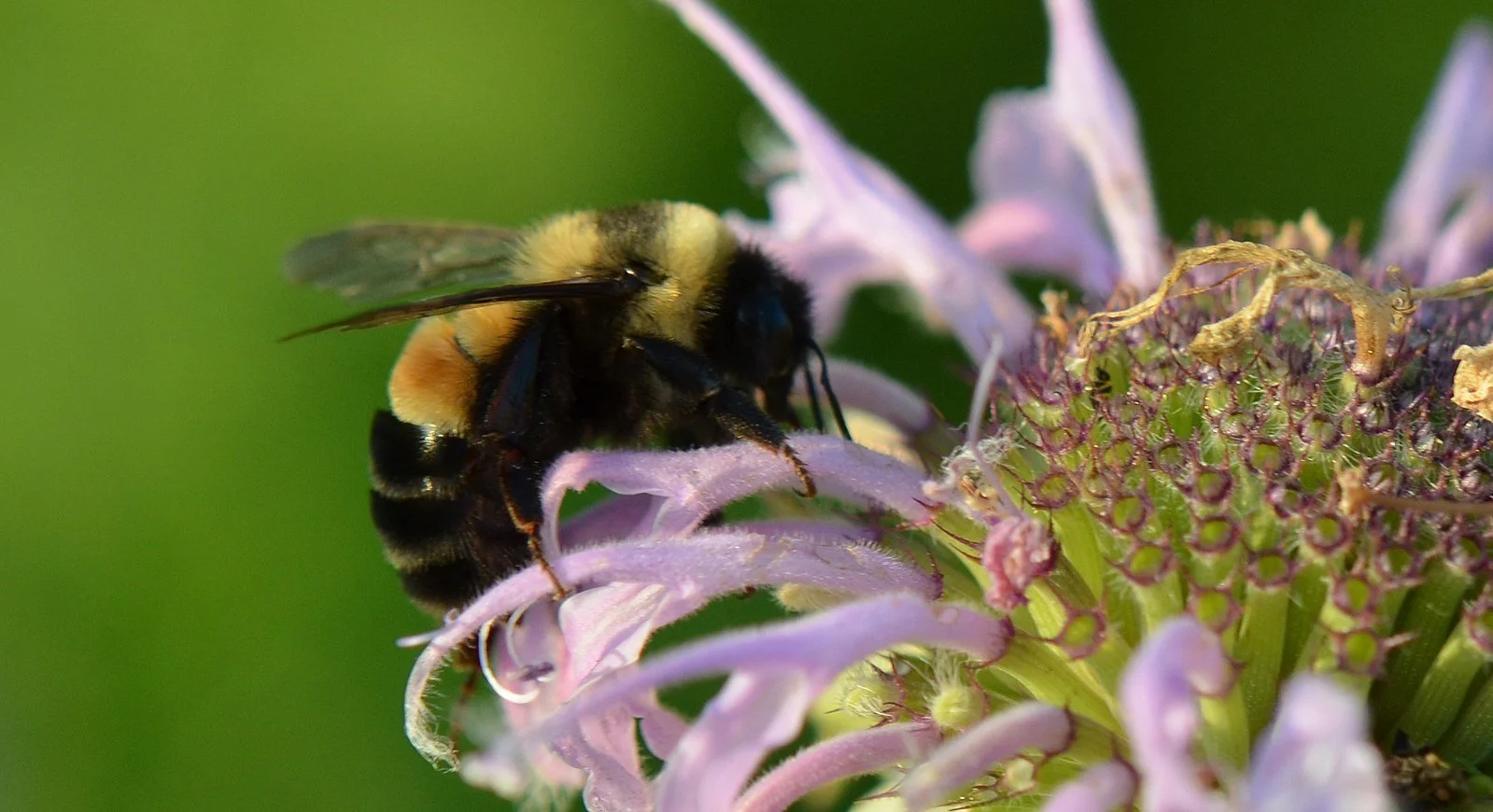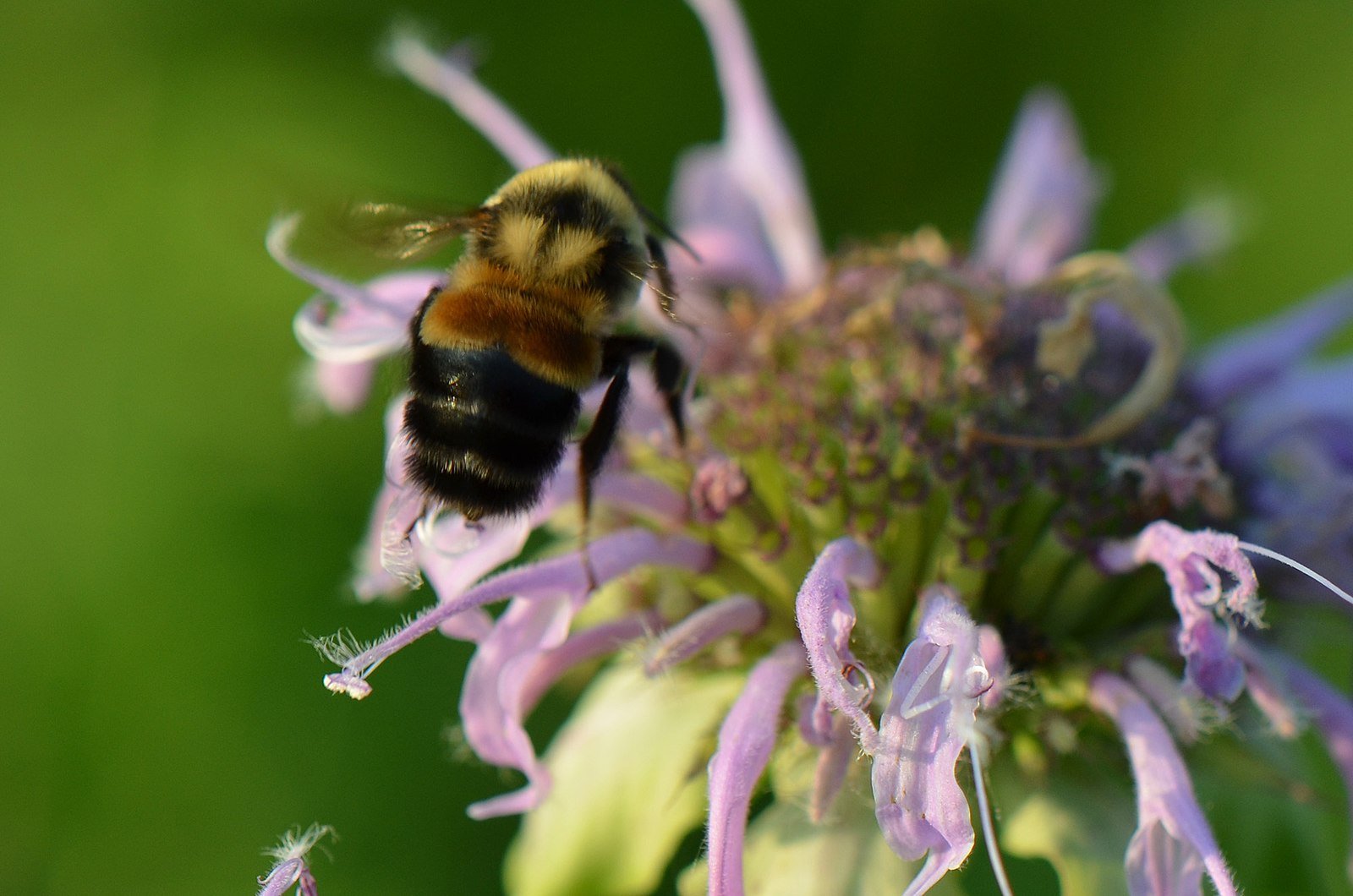Four At-Risk North American Bumble Bee Species
Emily Ellis
While it’s well-known that pollinators are sensitive to threats like climate change and pesticide use, some are especially vulnerable. Among them are many bumble bee species. More than a quarter of North American bumble bees - important pollinators for many native plants, as well as fruits and vegetables that are essential to human diets - are facing some degree of extinction risk, according to the Xerces Society for Invertebrate Conservation.
While conservationists are generally aware of the threats native bumble bees face - which include habitat loss, disease spread from commercially-bred bumble bees, pesticide use, climate change, and competition from honey bees - the habits and behaviors of some of these insects, such as the mysterious Franklin bumble bee, remain unknown to researchers. Bettering our understanding of bumble bees, and raising awareness about their plight, is essential for their survival.
Currently, only two species of North American bumble bees are listed on the U.S. Endangered Species List, although conservationists are rallying for other species to receive federally protected status. In honor of World Bee Day and Endangered Species Day this year, we’re writing about four North American bumble bee species at a high risk of extinction (several of which are found in Virginia), and current efforts to protect them. Scroll down to read more.
Rusty Patched Bumblebee (Bombus affinis)
Photo: USFWS
If you visited Fauquier County prior to the 1990s, you may have spotted rusty patched bumble bees buzzing among farmlands or the wildflowers in Sky Meadows Park. Today, the insect holds the sad distinction of being the first bumble bee species ever to be listed on the U.S. Endangered Species List, where it was placed in 2017 after declining the last twenty years from close to 90% of its historic range.
Rusty patched bumble bees - so named for the rust-colored patch that the worker bees have on the front half of their second abdominal segment- are buzz pollinators, meaning they detach firmly-held pollen from anthers by vibrating. They are often confused with the brown-belted bumble bee, a common species that we see frequently at Oak Spring (see the differences here).
Rusty patched bumble bees were once common throughout the Eastern United States into the Midwest, but now are found in only a fraction of their native range. In Virginia, Fauquier is one of the handful of counties where they are still seen. You can learn about some of the state-led conservation efforts for rusty patched bumble bees, and what citizens can do to help, at dwr.virginia.gov.
American Bumble bee (Bombus pensylvanicus)
Photo: Louise Woodrich via inaturalist
The iconic, yellow-and-black American bumblebee was once one of the broadest-ranging and recognizable bumble bees in North America, but its numbers have drastically declined over the two decades. It has disappeared from eight states where it was once found in abundance, according to a petition from the Center for Biological Diversity and Bombus Pollinators Association of Law Students that calls for it to be placed on the U.S. Endangered Species List.
American bumble bees prefer open fields and farmlands. A ground-nesting species, they pollinate a range of wildflowers and crops and, like most other bumble bees, are threatened by factors that include habitat loss, pathogens and competition from commercially-raised bees, and large-scale agriculture.
Currently, the American bumble bee is not protected under any state or federal law, although that might change as their numbers continue to decline and conservationists continue to work to raise awareness. You can read more about efforts to get endangered species status for the insects here.
The Franklin Bumble bee (Bombus hyperboreus)
Photo: Smithsonian Institution, National Museum of Natural History, Department of Entomology
In 2021, the Franklin bumble bee became only the second North American bumble bee, and the first species found in the American West, to be placed on the U.S. Endangered Species List. While the bee hasn’t been seen by scientists since 2006, researchers believe it still exists in its native range along the Oregon-California border.
Since it was first described by scientists, there have only been 325 documented sightings of the elusive Franklin bumble bee, most of those by entomologist Robbin Thorp, who observed the bee’s decline between 1998 and 2006. The Franklin bumble bee’s new Endangered status will free up more federal funding to study the mysterious bee, efforts that could lead to its its rediscovery.
Southern Plains Bumblebee (Bombus fraternus)
Photo: ash2016 via iNaturalist
Although not on the U.S. Endangered species list, the Southern Plains bumble bee does meet endangered criteria according to the International Union for Conservation, with a 2012 study showing that it existed in only 27% of its historic range. The Xerces Society estimates that if it continues to decline at the current rate, the species could go extinct within 80-90 years. Larger and less fuzzy than many other North American bumble bee species, it is found in open and grassy areas throughout the U.S., especially in the Great Plains region. The development and modification of grassland habitat, which has been especially significant in the plains area in the past decade or so, is one of the reasons for the insect’s sharp decline.
These four bees represent only a handful of the bumble bees - as well as other native bee species - that we could lose forever. If you’re interested in learning more about declining bees and ways you can protect them, some great resources to check out include this infographic from our friends at Virginia Working Landscapes, and information published by the Xerces Society, the Center for Biological Diversity, the IUCN Wild Bee Specialist Group, and the Virginia Natural Heritage Program.
Banner image: USFWS Midwest Region
Thanks to Carson Ellis and Rea Manderino for their help with this blogpost!




